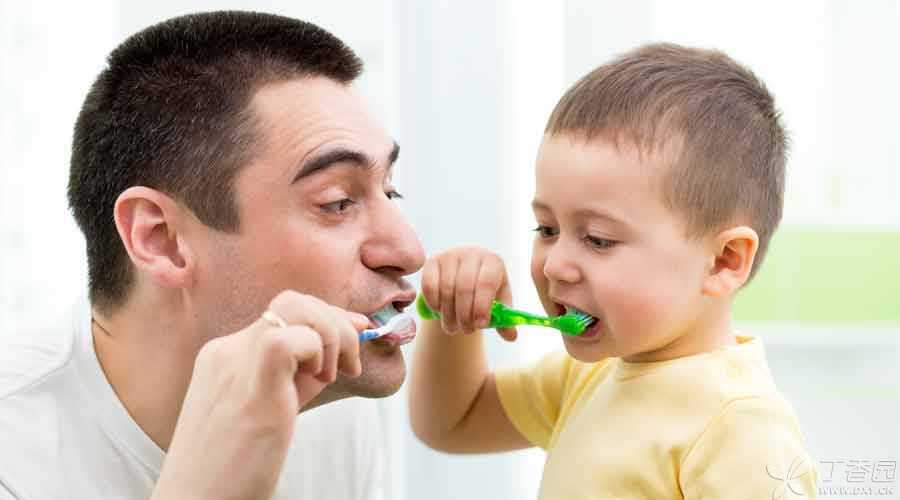
From time to time in my clinical work, I encounter such babies:
About 5 or 6 years old, open your mouth and have a look, full of rotten teeth.
Parents’ Association emphasizes:
We taught the child to brush his teeth when he was 3 years old, and we didn’t let him eat sugar very much at ordinary times. We thought it would be all right.
However, parents may not know that dental caries (tooth decay) is a multi-factor disease, which is far from enough to prevent.
The sooner you brush your teeth, the better
The current mainstream view is that once teeth erupt, they must start brushing their teeth.
In other words, from the time the baby erupts its first deciduous tooth (about 6 months old), parents will brush TA’s teeth with toothpaste and recommend fluoride toothpaste.
Don’t think this is an impossible task. In fact, the earlier children start brushing their teeth, the more they can get used to brushing their teeth every day. In the long run, they will save a lot of things.
Pay attention to the cleaning of the adjacent surfaces of teeth.
Most children’s deciduous teeth are sparsely arranged, and there will be a gap of about 1 mm between the teeth. These gaps are called [primate gaps], which are common between the incisors and canines. However, there are also many children whose teeth are arranged very tightly.
Gap teeth are not easy to retain food, because the gap is large, which is conducive to cleaning; On the contrary, it is easy to have food residues, which will lead to caries on the adjacent surfaces of teeth, which is what we call “caries on the adjacent surfaces”.
Among children’s caries, [adjacent caries] is very common and difficult to find at an early stage. When it is visible to the naked eye, the range of caries is very large and the condition of teeth is already very poor.
Tools that can effectively clean the adjacent surfaces of teeth include interdental brushes, floss, floss, etc.
Water floss is suitable for older children, while interdental brushes and floss have no age limit.
It is usually suggested that if there is food impaction, it should be cleaned immediately after meals, and the adjacent surfaces should be cleaned before brushing teeth at night before brushing teeth.

Before the age of 3
- Before 6 months, the child’s diet was basically only milk. It is recommended that parents use gauze or finger cuff toothbrush to clean the surface of their teeth after each milk. In the morning and evening, they use children’s fluoride toothpaste and toothbrush to clean their teeth. The dosage of toothpaste is about the size of [1 grain of rice], which is a very safe dosage without worrying about fluorosis.
Children of this age can’t [vomit] yet. Gargling will only lead to toothpaste being swallowed up. Therefore, after brushing your teeth, you don’t need to gargle your child’s mouth, and let fluorine stay in your mouth as long as possible, so as to better protect your young teeth.
Brushing method:
For children of this age to brush their teeth, the important thing is the posture of parents and children when brushing their teeth.
We recommend parents to sit at 12 o’clock on their children’s heads. This position allows parents to see the situation of each deciduous tooth clearly and is convenient to operate.
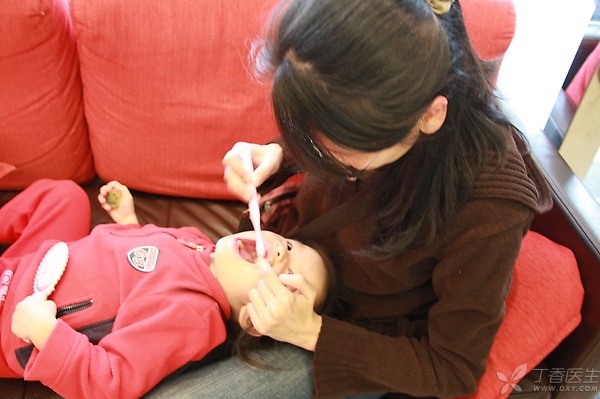
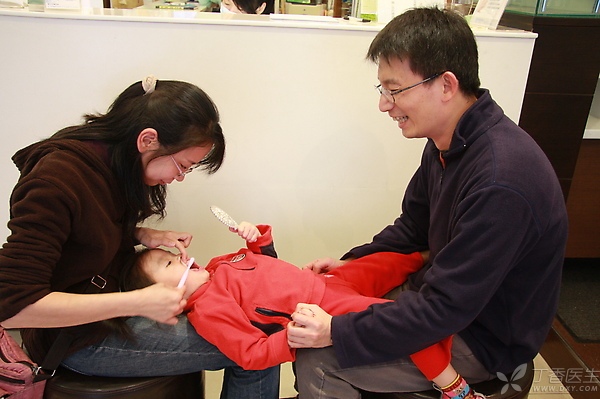
Intensive care:
From the beginning of tooth eruption, fluoride can be considered for teeth, and it is recommended to do it every 3 ~ 6 months.
3 ~ 6 years old
- Children after the age of 3 will want to brush their teeth more, Parents should consciously teach their children to clean their teeth. Parents should check their children after brushing their teeth. And help children clean the tooth surface that is not easy to brush. Children aged 3-6 are suitable to use children’s toothbrushes of the corresponding age and children’s fluoride toothpaste. The dosage of toothpaste is the size of [1 pea], about 5mm long, and only rinse with little clear water after brushing teeth.
Brushing method:
Children of this age group are more suitable to use [arc brushing method], that is, the method of drawing large circles on the tooth surface.
Parents should pay attention to check whether the occlusal surface of their children’s teeth (the side used to chew food) and the side of their tongue are brushed clean.
Intensive care:
At the age of 3 ~ 4, you can consider sealing the pit and fissure of your baby’s deciduous molars, that is, applying [pit and fissure sealant] to the pit and fissure of your teeth to form a protective barrier to prevent bacteria and their metabolites from eroding your teeth.
After the age of 6
- Many children over the age of 6 can brush their teeth independently, However, parents still need to supervise and check the brushing effect. (In the United States, the children’s dental guidelines require parents to check their children until the age of 10.) Children at the age of 6 can already learn and master [Babbitt brushing method], which is also the brushing method we recommend to all adults.
The key points of Babbitt brushing method are:
- The toothbrush is placed obliquely on the neck of the tooth at an angle of 45 degrees with the long axis of the tooth. Use gentle force to remove bacteria from the gingival margin of the neck by small-scale [tremor] left and right. The tooth surface is brushed with the strength of the wrist: the upper tooth is brushed from above to below and the lower tooth is brushed from below to above.
There are many videos of Babbitt brushing on the Internet, which can be learned more intuitively.
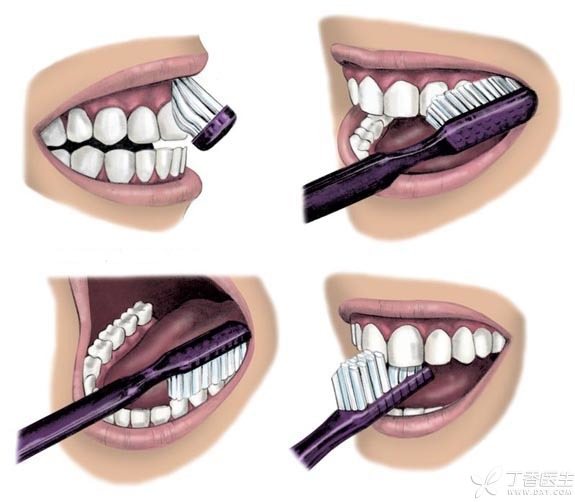
When 6-year-old children choose toothbrushes, they also adopt the same principles as adults:
- Choose a toothbrush with soft bristles and a small brush head. The size of the brush head is about the width of two teeth. Fluoride toothpaste is still recommended. Just squeeze out one of the brush head sizes.
Intensive care:
It is suggested to seal the pit and fissure of the first permanent molar (six-year-old teeth) at the age of 6-8. The pit and fissure of the second permanent molar was sealed around 12 years old.
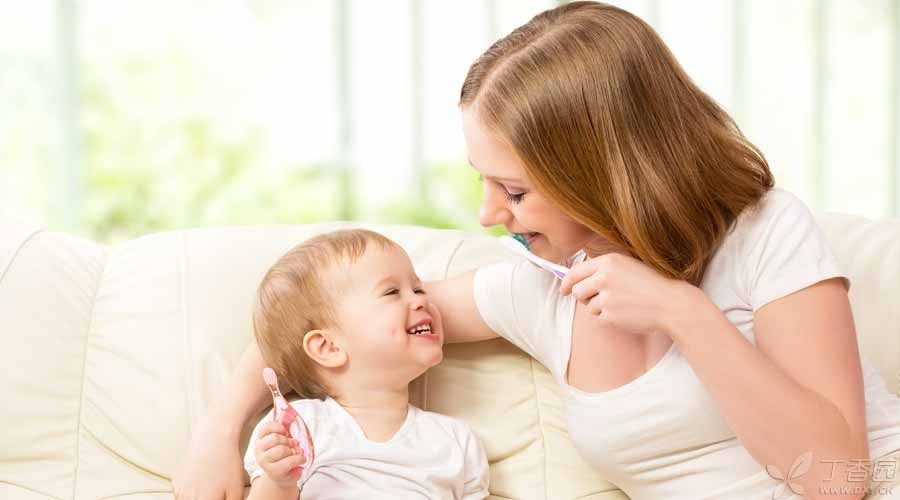
How Makes Children Love Brushing Teeth?
Perhaps most children’s attitude towards brushing their teeth will give parents a headache, but most children’s oral health products on the market are enough to attract children:
-
Use picture books to tell children stories about brushing their teeth. Famous picture books for brushing teeth include < < Bear does not brush his teeth > >, < < New Things in Teeth Street > >, etc. There are also many cartoons about brushing teeth and caring for teeth on the Internet.
-
Take your child to purchase oral products together and choose her/his favorite toothbrush and toothpaste.
-
Try to use electric toothbrushes. Nowadays, children’s electric toothbrushes are cute in appearance, and some electric toothbrushes will use high technology to develop a series of small games to brush their teeth, making children’s daily brushing a monster-fighting adventure.
However, more importantly, parents should pay enough attention to oral hygiene, and they should also seriously study the correct brushing methods, brush their teeth carefully in the morning and evening, and set an example.
Prevention of tooth decay, multi-pronged approach
To protect your teeth, brushing your teeth is essential, but it is not enough.
1. Control diet, eat less sugar and form good habits.
Eat less snacks, drink less carbonated drinks and fruit juice, and pay special attention to whether children have the habit of putting sugary drinks in their mouths-these drinks can corrode teeth by themselves. When drinking, straw is recommended.
2. Regular visits to the dentist
It is recommended that children should visit the dentist at least once every six months.
If there is a lot of tooth decay, you may need to visit the dentist every 3 months.
Dentists can help with the risk assessment of dental caries, and can also detect oral diseases such as dental caries at an early stage. When necessary, fluoride coating, pit and fissure sealing and other methods can also be used to prevent dental caries.
